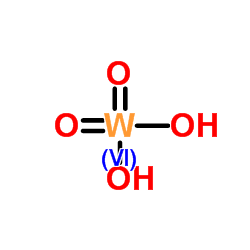Interaction between isopoly-tungstic acid and berberine hydrochloride by resonance Rayleigh scattering spectrum.
Shaopu Liu, Ling Kong
Index: Anal. Sci. 19(7) , 1055-60, (2003)
Full Text: HTML
Abstract
In a weak acid medium, when an isopoly-tungstic acid reacts with berberine to form an ion-association complex, strong resonance Rayleigh scattering (RRS) appears and obvious frequency-doubling scattering (FDS) as well as second-order scattering (SOS) come into being. The scattering peaks are located at 288 and 369 nm for RRS, at 290, 370 and 390 nm for FDS, and at 480, 540 and 740 nm for SOS. Under optimum conditions, all three scattering intensities are directly proportional to the concentration of berberine and can be applied to the determination of berberine. The sensitivity of the RRS method is the highest; the detection limit (3sigma) for berberine hydrochloride is 7.6 ng/ml. The method also has good selectivity. It has been applied to the determination of berberine in pharmaceuticals and goldthread extracts with satisfactory results. In the paper, studies of the existing species of isopoly-acid and the component of the ion-association complex are reported and the reasons of enhancement of RRS are discussed.
Related Compounds
| Structure | Name/CAS No. | Molecular Formula | Articles |
|---|---|---|---|
 |
Tungstic acid
CAS:7783-03-1 |
H2O4W |
|
Catalytic conversion of cellulose to ethylene glycol over a ...
2013-04-01 [ChemSusChem 6(4) , 652-8, (2013)] |
|
Identification in various chlorate-resistant mutants of a pr...
1985-04-17 [Biochim. Biophys. Acta 839(2) , 181-90, (1985)] |
|
Effect of oxyanions of the early transition metals on rabbit...
1983-10-11 [Biochemistry 22(21) , 4994-5000, (1983)] |
|
Vanadate, tungstate and molybdate activate rod outer segment...
1985-04-22 [Biochim. Biophys. Acta 845(1) , 81-5, (1985)] |
|
Spectroscopic and DFT study of tungstic acid peroxocomplexes...
2007-03-22 [J. Phys. Chem. A 111(11) , 2166-71, (2007)] |